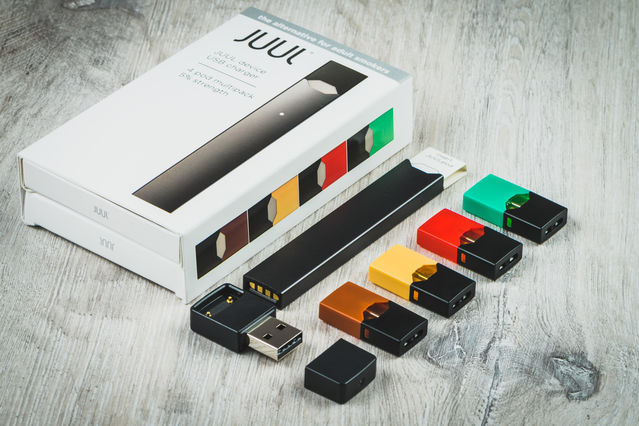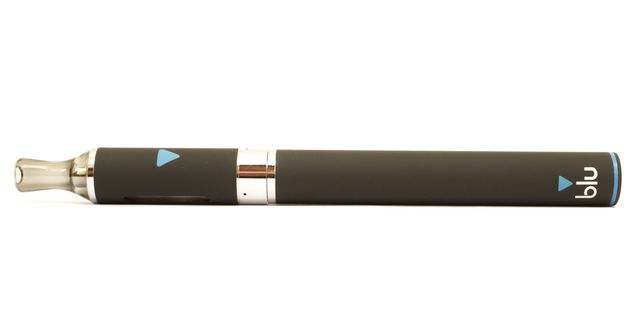Adolescence
Teen Juuling, Vaping, and Dabbing Demystified
The world of teen substance use can be perplexing for many parents and adults.
Posted October 22, 2019 Reviewed by Abigail Fagan
This past week, the popular e-cigarette brand Juul came out with a plan to suspend its sale of specialty flavored products (mango, crème, cucumber). But the company will continue to sell its tobacco items. This followed the death of 33 users and injury or illness of roughly 1,500. The FDA is currently investigating these products which have become increasingly attractive to teen users.
As a therapist, I am fortunate that when it comes to substance use, many teens are quick to divulge. Knowing their confidentiality is protected, they often share the ins and outs, the ways they trick parents and teachers while getting away with their substance use. To say their world is mystifying at best is an understatement. After all, many of the devices these students use are shaped like a regular USB drive. Slick and discreet, any adult could easily think these items are simply another iGizmo in their teen’s list of gadgets.
The spike in popularity of e-cigarettes has become a nationwide problem. In the current school district where I see students in Oregon, many bathrooms are now shut down altogether to discourage students from using substances at school during class times. Meanwhile, other schools are installing smoke detectors in an attempt to sniff out when students are using. Further perplexing is the terminology and understanding of what exactly teens are doing.
Here are the most common substances teens are currently using:
Juuling: Juuls are essentially a brand name for a type of e-cigarette. Juuls are made up of four primary components: a tank which usually stores a pod or cartridge (the substance which may or may not be flavored); a battery; sensors and software; and an atomizer (a small heating device that allows the liquid in the cartridge to become a vapor).
Research indicates that the most commonly used tobacco products among teens are in fact e-cigarettes. As they are marketed toward teens with fruit flavors and in attractive packaging, many teens fail to recognize the hazards in these substances.

Vaping: Vaping is essentially another word for e-cigarettes or Juuls. Any of these substances are basically taking a liquid form of chemicals and heating them into a vapor which can then be inhaled. It is not uncommon to see billowing clouds of smoke emanating from these devices.
Studies indicate that one pod or cartridge may contain as much nicotine as an entire pack of cigarettes. While some teens may go through a cartridge over time (they are said to provide roughly 200 puffs per pod), there is certainly risk of them using an entire cartridge in one sitting. These e-cigarettes need to be charged just like a cell phone, and the charge on these devices typically lasts a day.

Dab pens: The critical distinction between dab pens and Juuls or e-cigarettes is that dab pens feature THC, the active component of marijuana. Teens using dab pens are often looking to get the same high as they would from smoking marijuana. Similar to vaping, teens can become addicted and self-medicate using such devices. Clinically, I have observed teens having more difficulty abstaining from a dab pen than a Juul, as they can quickly become addicted to the THC.
In addition to the clear health hazards of these devices and substances, there is also a grave issue with addiction at large and its accompanying ramifications. Teens who use these substances often lie to parents, teachers, and others who care about their well-being. They may hide their use or dependence and find ways to use Juuls or dab pens belonging to friends. Don’t be surprised if a teen never brings a USB-like device home but still has a dependence problem. These devices have become so common that friends will hide them for one another, supply cartridges, and so forth. As they are fairly innocuous they are quite easy to hide as well.
As the world of teen gadgets and drugs have come to mix, as one might expect among Generation Z, it has become increasingly complicated to understand trends and norms. Cliché is the image of the teen rolling their eyes at parents who have no clue what is going on in the lives of youth. But fortunately in this age of information and rapidly evolving technologies, one of the most powerful tools remains antiquated in its efficacy. Simply ask. Teens too often don’t feel adults have a true interest in what they are doing, or that they are quick to get judged and in trouble. In therapy, I have been amazed by how open teens have been, even when I’ve expressed concern for their health and well-being. As technologies evolve and the face of substance use takes another shape and unknown form, be open to listening, and you might be surprised by what you will learn.


